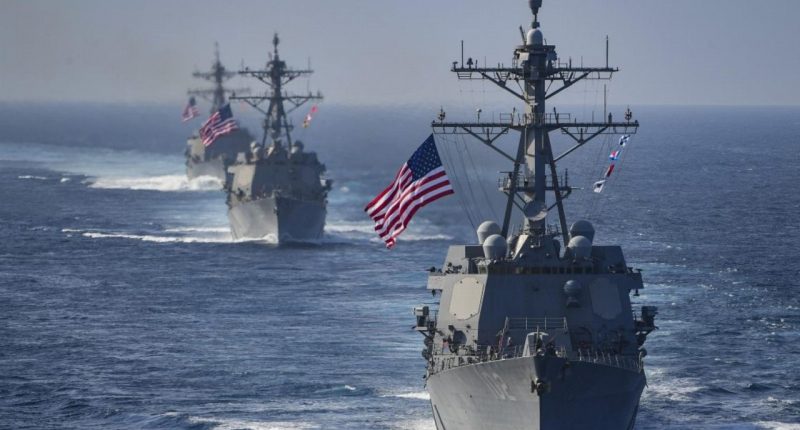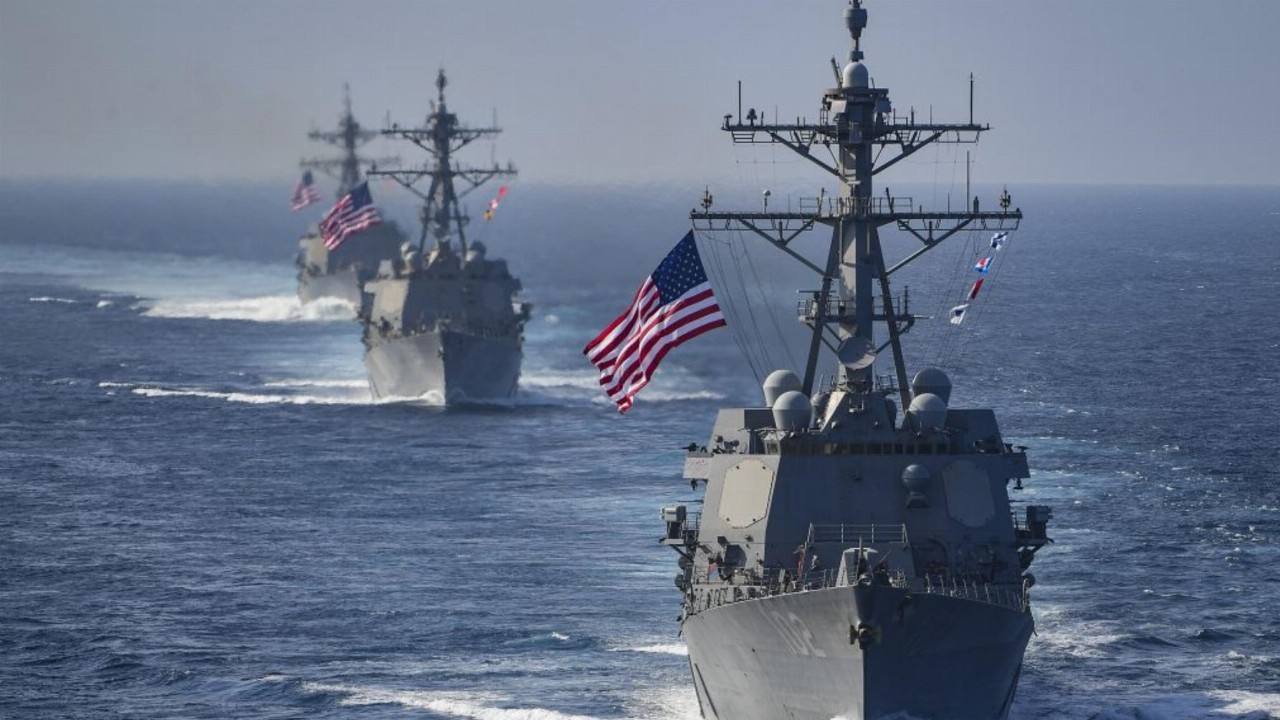- Over the weekend, a U.S. Navy aircraft carrier conducted exercises in the South China Sea, which has recently been the site of growing international tension
- The strike group was led by the USS Ronald Reagan and practised flight operations and high-end maritime stability operations and exercises
- U.S. Navy Commander Joshua Fagan said the States is continually working to respond to any contingencies in the South China Sea region
- China claims ownership of roughly 90 per cent of the South China Sea region
- But the United States and Australia have both rejected China’s claims to the area and accused Beijing’s actions of going against international law
- It seems parties involved in the South China Sea dispute are flexing their military strength as a warning to their opponents
Over the weekend, a U.S. Navy aircraft carrier conducted exercises in the South China Sea, which has recently been the site of growing international tension.
The strike group, which was led by the USS Ronald Reagan, practised flight operations and high-end maritime stability operations and exercises, according to a statement from the U.S. Navy.
While naval exercises are typically conducted to perfect difficult maneuvers and flex military strength, it seems the choice of location for the weekend’s procedures was certainly no coincidence.
U.S. Navy Commander Joshua Fagan said the training is an example of how the States is continually working to respond to any contingencies in the South China Sea region.
“Integration with our joint partners is essential to ensuring joint force responsiveness and lethality, and maintaining a free and open Indo-Pacific,” the Commander said.
The U.S. Navy said operations and exercises with other military branches in the Indo-Pacific region are common to build and maintain warfighting readiness.
What’s the South China Sea dispute about?
Essentially, China claims ownership of roughly 90 per cent of the South China Sea region — a claim which has been rejected and criticised by several countries, including the United States and Australia.
In July, U.S. Secretary of State Mike Pompeo blasted China’s claims to the area as unlawful. He accused Beijing of “bullying” surrounding nations out of the area, which is rich with offshore resources and good for fishing.
It’s estimated that over $4 trillion worth of trade passes through the South China Sea area every year.
Surrounding nations such as Vietnam, the Philippines, Taiwan, and Malaysia all claim a portion of the area of their own, but no country claims even close to the area that China wants to control.
“The world will not allow Beijing to treat the South China Sea as its maritime empire,” Secretary Pompeo said in July.
Just two weeks later, Australia backed the States by openly rejecting China’s claims to the area.
China responded by lambasting the U.S. for meddling in international affairs and threatening Australia with retaliation in the form of trade deals.
Growing tensions
Last month, Australian warships unexpectedly encountered the Chinese navy en route to a military exercise with the U.S. and Japan.
The Department of Defence said all interactions with the Chinese navy in the unplanned encounter were conduction in a safe and professional manner.
However, it seems unlikely the encounter happened by chance so soon after Australia rejected China’s South China Sea claims.
No military threats have been made nor action taken by the parties involved in the South China Sea dispute, but it seems the involved countries are squaring up as a warning to those around them.
So far, no party seems willing to back down from their position.








